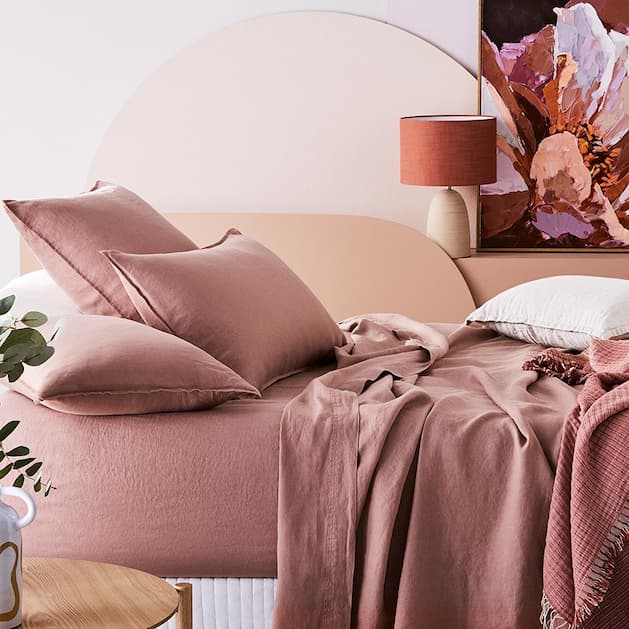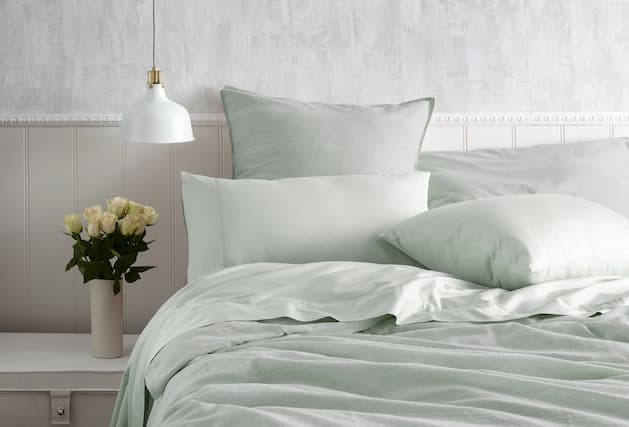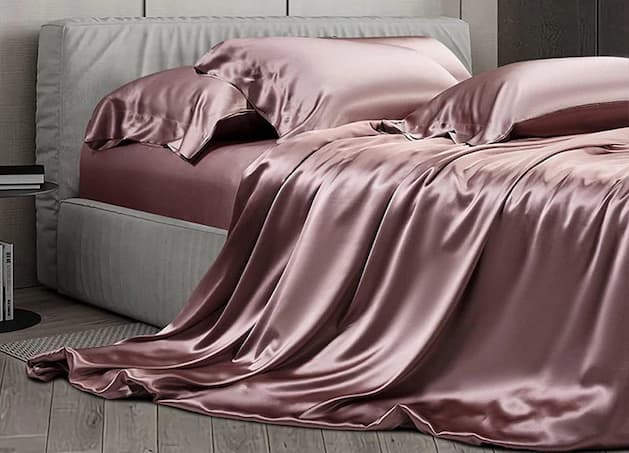When you consider the fact that you’re spending roughly one-third of your life either sleeping or laying in bed, it becomes clear that getting the proper sheets is critical. The only issue is that buying a set can be really daunting. Which colour should you choose? What about the number of threads? What amount of money are you willing to splurge on your new sheets?
But, before you get into thread counts and aesthetics, the most crucial question is: what fabric should you use? So, let’s compare the two most popular textiles for quality sleep: bedlinen, cotton and silk bed sheets.
Linen Sheets

Linen is the oldest of these three fabrics, having been cultivated for around 8,000 years. Flax plants grow in subtropical temperatures, therefore it’s no surprise that some of the best flax comes from France. This particular region experiences long, hot summers and relatively little rainfall, resulting in abundant growth. The flax plant is harvested and the fibres are extracted to create linen thread.
Linen is as easy to care for as cotton, but unlike cotton, which can become threadbare as its fibres weaken, this fabric is far more durable and improves with each wash, giving it the greatest lifetime and cost-per-wear of the three materials. Silk is one of the most fragile textiles on the market, and one unintentional snag can ruin the cloth altogether. Linen, on the other hand, is designed for wear and tear, making it tough to destroy.
Of the three choices, linen is the low-maintenance cloth that only gets better with wear and washing. Not only will your bed linen bedding become more glossy with age, but it will also soften. It doesn’t require any special care or attention – simply pop it in the washing machine and let it do its thing. You can discover plenty of bedlinen options online, anything from sheets, pillowcases, quilt covers, and quality bed throws if you want to bring out the best in your bedroom or if you want a higher quality, natural fabric.
Cotton Sheets

Cotton is the most commonly used bedding material because it is inexpensive, soft, and easy to obtain. Although linen was used before cotton, the latter has subsequently superseded it in favour due to the ease and volume of cultivation. Importantly, cotton quality varies significantly—a characteristic stemming from the varying lengths of the material’s fibres, which come in either short-staple or long-staple, with long-staple resulting in a more luxurious product.
Long-staple kinds of cotton, such as Pima and Egyptian, are the strongest and most expensive types of cotton, with the least likelihood of pulling or lint collection. However, in all cases, cotton fabrics are relatively robust and chemically stable, which means they can tolerate the chemicals found in human sweat, soaps, and detergents. Cotton’s moisture-absorbent nature allows it to wick away any trace of moisture from your skin.
Cotton’s major disadvantage is that its non-organic form can be exceedingly damaging to our environment, from herbicides and insecticides to the compounds used throughout the production and dying processes. If these chemicals are not properly disposed of, they will surely end up in our water, soil, and air.
Furthermore, cotton requires a large amount of water to be produced—it can take over 20,000 litres of water to generate a single kilogramme of cotton, which can be used to make one t-shirt and one pair of trousers. So, if you prefer to sleep in cotton sheets, consider that it is organic and responsibly created.
Silk

Despite being accessible for centuries, silk remains one of the most prized bedding linens due to its extraordinarily smooth texture and hefty price tag. It’s created through the labour of a fine string-like substance generated from a small and uncommon insect known as the silkworm. The harvesting technique is time-consuming and costly; the insects must be destroyed and their silk must be wrapped tightly enough to endure the weaving process that follows. The finished product is soft, breathable, and antibacterial.
However, unlike cotton, silk does not absorb natural moisture from your face and hair. The expense and maintenance of silk are also significant disadvantages. Silk bedding must be hand-washed (at least the first few times) and then washed on cold, delicate cycles with a light detergent.
In Conclusion
So, whether you’re wanting to refresh your bedroom or improve your sleeping habits, energise yourself, or combat sleep apnea, remember that there are many different approaches to enjoy the quality beauty sleep you deserve.
When it comes to choosing one of these three fabrics, keep in mind that while all of them are high-quality and breathable, linen has a higher moisture absorbency than cotton and silk combined. Linen uses fewer resources in its production, making it a more environmentally friendly and sustainable fabric than its competitors. Unlike cotton, which has high water demands, and silk harvesting, which kills millions of endangered silkworms, flax plants are the most environmentally benign and ethical of the three.


